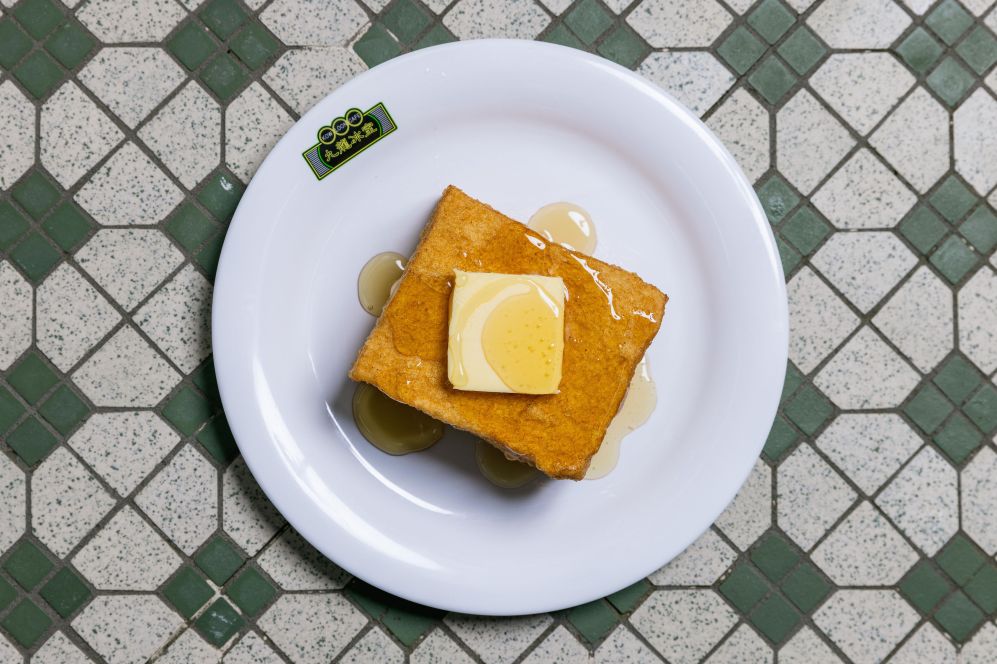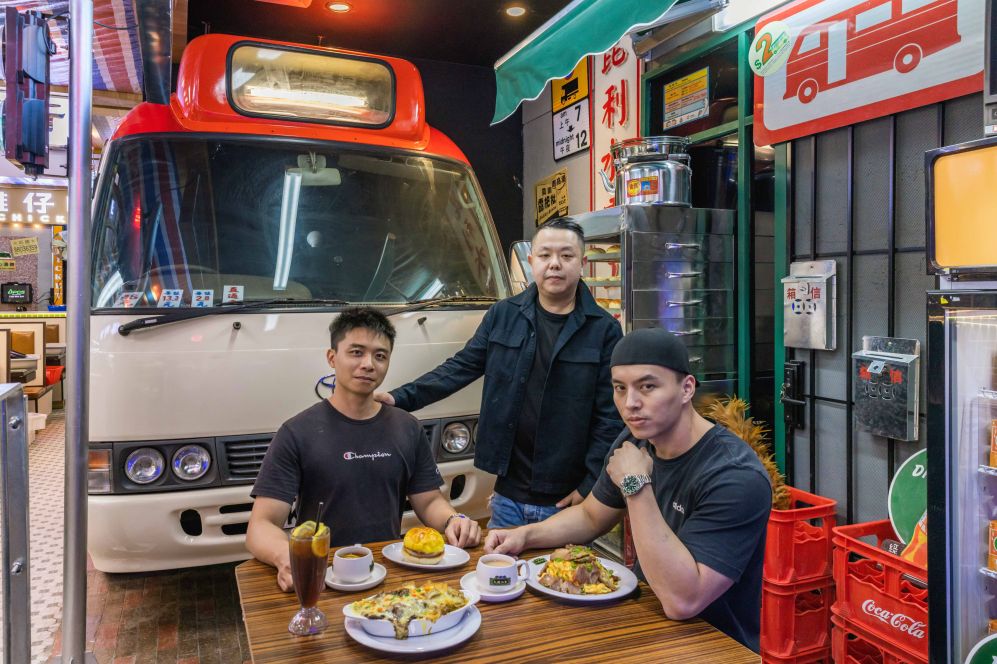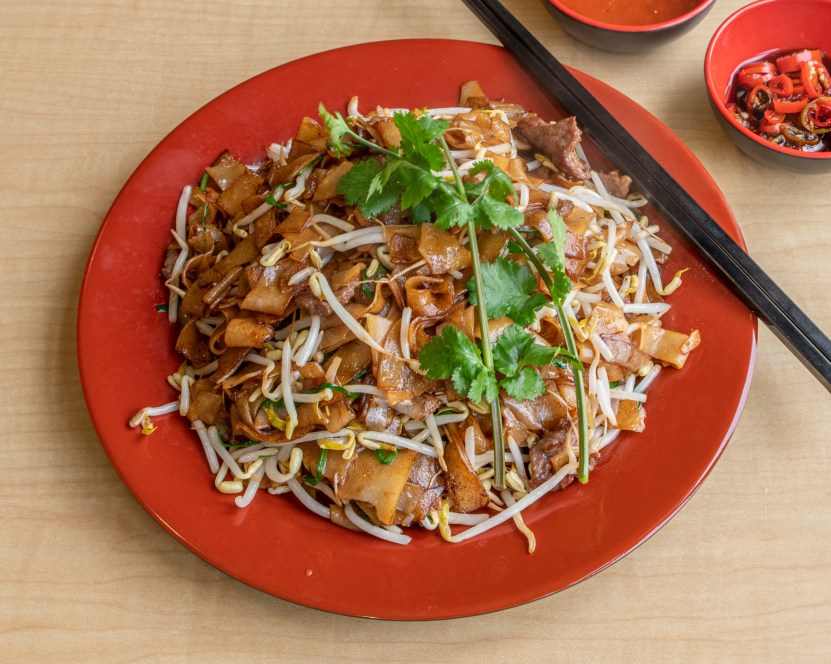In the fast-paced city of Hong Kong, food is available on every corner. Over time, its cuisine has been shaped by two main concepts: the first is cha chaan teng, a café or diner-style venue that has been an essential for locals since the ’50s.
The second is traditional street food or hawkers, where dishes such as fish balls and shark fin soup have long been staples. There is a lot to unpack when it comes to Hong Kong’s overall food culture, but local venues are aiming to recreate the experience by capturing the essence of history, tradition and influence.
Hospitality talks to Kowloon Café’s Howin Chui and Sun Ming’s David Chan about key dishes and providing the cha chaan teng experience for diners in Sydney. Hong Kong cuisine is hard to nail down and is defined by its multifaceted nature.
“Hong Kong cuisine is Cantonese food, but if you talk about street food or café food, it’s very different,” says Owner of Kowloon Café Howin Chui. “Hong Kong cafés can be a mixture of Western dishes as well, but the street food is very authentic Hong Kong cuisine.”
According to Owner and Head Chef of Sun Ming Hurstville David Chan, geography has influenced much of the flavour profiles and dishes seen in Hong Kong.
“Everyone has different interpretations of what Hong Kong food is, but Hong Kong is situated in the south of China, so it’s a very southern type of Chinese food and that means we don’t have a lot of spice,” says Chan. “In the north, it’s very cold, so they use a lot more chilli. With Hong Kong food, you won’t find that sort of spice, but it’s richer in terms of flavour.”
Both venues specialise in cha chaan teng or Hong Kong café food, which is heavily prevalent in the city. “There’s a lot of cha chaan tengs in Hong Kong; they’re basically everywhere,” says Chui. “A cha chaan teng is where you can have a drink and get a feed quickly [for] breakfast, lunch or dinner. The menu is big, has a lot of variety and is really cheap.”
The concept came about during the ’50s, with the food representing a significant historical period for the city. “Hong Kong was colonised by the British, so there’s a
very British influence,” says Chan. “The breakfast menu would probably be congee
with a side of noodles, stir-fried noodles or youtiao (bread dough stick). You also get
French toast or macaroni soup with ham and peas.”

Street food, which can be found in open-air stalls known as dai pai dong, include everything from curried fish balls and cheung fun (rolled rice noodles) to siu mai and stinky tofu.
Although the offering at Kowloon Café is geared towards cha chaan teng dishes, the menu still serves typical street food snacks. “You don’t really find fish balls in cha chaan teng, but we still sell them,” says Chui. “The Hong Kong-style curry is another big thing; you can have it with fish balls, beef brisket or chicken for different flavours.”
For Chan, street food stalls conjure up fond childhood memories, but the chef describes them as a “dying art” due to the dwindling numbers. “Because it has to be
cheap and good, rent is a big factor and a lot less people are on the streets now COVID-19 is happening,” says the chef. “Growing up in Hong Kong, there would always be stinky tofu, but it’s almost impossible to find now.”
A cha chaan teng menu can encompass many different dishes, but there are core food items used across the board. Ingredients including egg, ham, corned beef and spam are mainstays at a cha chaan teng and are frequent add-ons at Kowloon Café. “Egg and spam are huge because people order a rice [dish] and add egg and spam or they get a curry brisket rice with extra spam.”
Tomato-based dishes are also coming to the fore as Hong Kong café food continues to evolve. “In recent years, tomato-based foods have been playing a big part in Hong Kong cafés,” says Chui. “The baked tomato pork chop is an old-school signature for a cha chaan teng, it’s a big tomato pork chop with rice and cheese on top.”
Noodles are ever-present at Sun Ming, with the prized wonton noodle soup requiring the right type for the job. “You get really big wontons with lots of meat and a big chunk of prawn inside,” says Chan. “The noodles are like an angel hair noodle, which we don’t make here in Australia. We have a supplier that does egg noodles, but they’re slightly on the thicker side. In Hong Kong, they’re very thin, light and airy.”

When talking about Hong Kong cooking, wok hei is essential, which translates to ‘breath of the wok’. “We get the wok really hot and coat it with oil,” says Chan. “Then we add the noodles or another ingredient and the cast-iron flavour passes onto the food because of the extreme heat.
“You can actually smell the char and the raw elements imparting the charcoal-ness. Because of the high pressure of our workstations, a wok only lasts for two weeks and then we throw it out because it has a hole in it.”
The method is applied to a beef and stir-fried noodle dish. “It’s a rice noodle stir fried with beef and we add beansprouts and chives for colour and aromatics,” says Chan. “By the time we finish the dish, it has a really nice char that represents how Hong Kong food should be.”
Desserts and drinks comprise a big part of the menu at a typical cha chaan teng, and Kowloon Café’s Hong Kong-style French toast has always been a top seller. The dessert uses thick slices of white bread sandwiched together with peanut butter before it’s deep-fried and topped with butter and condensed milk. “We use nearly three pieces of bread to do our French toast,” says Chui.
The venue uses thicker slices for the dish. “One of our friends owns a bakery and we tell them the size we want,” says Chui. “Normally, people store it for one week, but we get it delivered every two days so it’s fresh.”
Tea is served with any meal, and there’s a vast selection to choose from covering lemon teas to milk teas. Chan imports his tea from Hong Kong which is used as the foundation for the venue’s drink selection. “If someone wants a lemon iced tea, we use it as the base,” he says. “For milk tea, we just add a little bit of Carnation milk and sugar syrup.”
Other tea options at a cha chaan teng include si wa nai cha or stocking milk tea where the brew is transferred multiple times through a silk stocking-like filter. But at Sun Ming, yuenyeung is a staple beverage. “It means ‘half half’ and it’s half coffee, half tea,” says Chan. “It’s very similar to an Italian macchiato.”

As described by Chui, a cha chaan teng’s offering “has to be tasty, cheap and fast”. Affordability and convenience are considered key pillars of the concept. “Hong Kong is a very fast-paced city,” says Chui. “Because of the pace, the food has to come fast and you can’t wait too long.”
Variety is also of the utmost importance; a large menu with plenty of options is part of the allure of a cha chaan teng or street stall.
“One of the things is variety, which is weird because in the restaurant business, everyone’s shortening their menus,” says Chan. “You’d rather do something well than have a lot of things because it makes it easier. I’ve probably got more than 80 items on my menu. But if I take one thing off, my customers are like, ‘Why did you take that off? I’d like to eat that’. It’s very hard to take away dishes customers are used to.”
Outside of Hong Kong, cha chaan tengs are prevalent in Macau and parts of Guandong, but the concept has also made its way to Britain, Canada, and of course, Australia.
For Chui, it’s about carrying on tradition and culture while also putting a fresh spin on it. “We opened Kowloon Café because my friends and I always go back to Hong Kong and there is food we miss,” he says. “We still have little bits and pieces of the Hong Kong culture, but I want to make sure people come in and go, ‘We are here to eat cha chaan teng food with a high standard’.”
Hong Kong cuisine has settled into the local food landscape, and customers are paying plenty of attention. “In terms of food, there’s always different phases of things that come through,” says Chan. “Before, there were all these Szechuan hotpot places, but Hong Kong food is in right now.”
Filed under
Sponsored Content

Mayonnaise crafted for culinary excellence
Sponsored by Goodman Fielder

Mareno M1: A commitment to hygiene and safety
Sponsored by Comcater
Trending Now
Resources
Lorem ipsum dolor sit amet, consectetur adipiscing elit. Fusce ac ornare lectus. Sed bibendum lobortis...
Lorem ipsum dolor sit amet, consectetur adipiscing elit. Fusce ac ornare lectus. Sed bibendum lobortis...
Sign up for our newsletter
